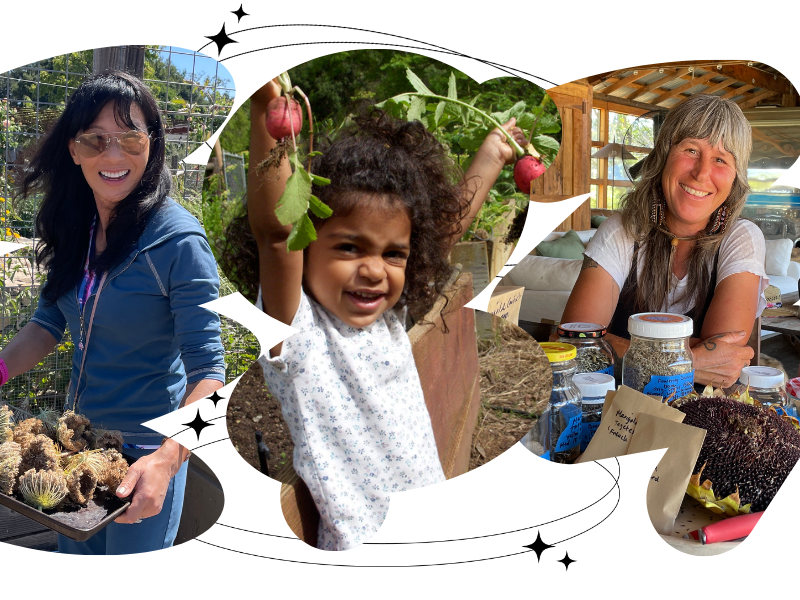Seeds to Sow in January
January offers options in and out of the garden. Resting, reorganizing, and reseeding are all activities to reward you in the New Year.
If you’re like me you might be caught amid opposing forces now: slowing down or speeding up. While I’m thankful for the intermittent rain in California this first week of January, I’m all for staying indoors to cook a nourishing pot of soup using veggies, herbs, and spices to fortify me in this slow-growing season. Curling up with a stack of seed catalogs and a warm drink also sounds promising. And then there are times I just want to run outside during the drier spells to push seeds into the soil and celebrate a break in the clouds. As temperatures dip and the rain persists, I keep wondering what is the best approach to create a magical, healthy garden to usher in spring? You too?
No worries. The more I thought about it, I realize there are many options for sowing success by mid April when that final frost date comes around. And it doesn’t matter if I feel dreamy or energized. Here are some suggestions that can align your desires in the midst of winter to fit either tempo or mood.
Journal about plants. Recall what you notice and appreciate in your garden—then and now. Reflect on last year’s growing season. What tricks did you learn? Did gardening expand your well being or confound you? Both? What colors or textures pleased you or were missing? Which plants boosted your moods? Your health?
Prepare to plant seeds indoors and reorganize your seed stash. Separate the seeds you’re planting now from those you’ll plant in spring. Set aside the seeds you’ll exchange at our 3rd Annual Seed Swap (stay tuned for the date). Make a list of the seeds you’ll trade them for. Find and exchange tools, tips, and materials with other gardeners to prepare to start seeds indoors.
Succession plant seeds of cold hardy vegetables and flowers. Beets, broccoli, cabbage, cauliflower, chard, collards, and endive, among others can produce all winter long. Flowers such as borage, calendula, nigella, scabiosa, strawflower, and sweet pea will give blooms now and later.
Cover plants to protect them from frost. Use recycled materials to create cold frames and makeshift cloches. Blanket them in burlap, bed sheets, or tarps (or just leave those pretty mini lights on). More on this from last month’s seeds to sow.
Browse seed catalogs and make and list. Note the seeds you’re low on and make a wish list of the seeds you dream of planting in spring.
Mulch and plant cover crop to retain soil moisture, nutrients, and warmth. Cover soil surfaces with straw, wood chips, rocks, or leaves at a depth of 2 to 4 inches. Add nitrogen to soil by planting fava beans in succession, then chop and drop the stems and leaves before they flower.
Wherever your motivation moves you during these early, blustery days of the New Year, be it indoors or out, your efforts are sure to sow fantastic ideas, adventures, and rewards come spring.
~~~
Contributing sources:
Shoutout to San Diego Seed Company for sharing their seed planting lists.
15 best winter herbs that will grow successfully in cold season




